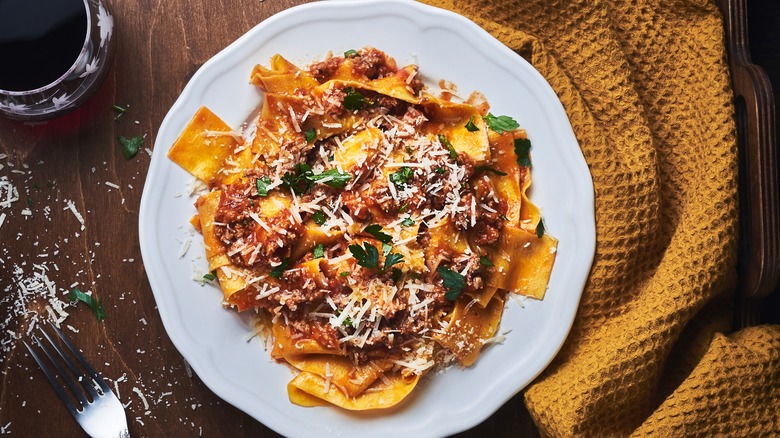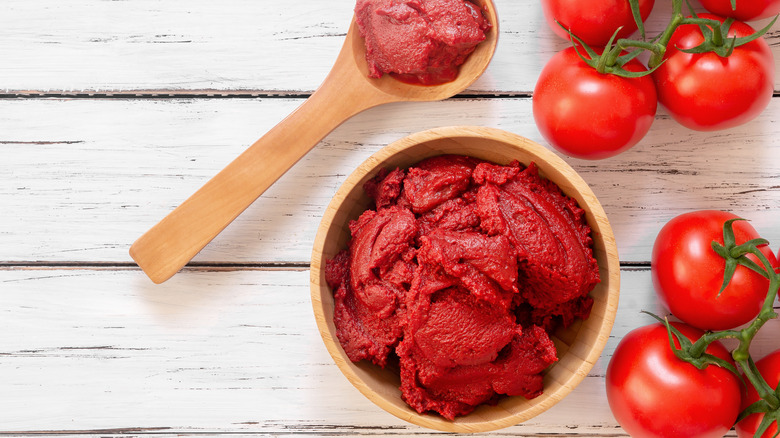The Tomato Paste Tip For Mouthwatering Bolognese Sauce
Whether you're using it for lasagna or ragù, it isn't too difficult to make a traditional Bolognese sauce using our recipe that includes pancetta, cubed skirt steak, and grated parmesan. But to take your sauce from yummy to mouthwatering, you may want to pay a little attention to an often-overlooked element of Bolognese: the tomato paste. It's typically used to thicken the sauce, but if cooked correctly, it can do quite a bit more than this.
Fresh out of the tube, tomato paste has a bright tanginess, but when heated, it can provide an even more complex depth of flavor. This is because cooking it concentrates the latent sugars and umami-flavored glutamates, turning this acidic nightshade ingredient into a savory-sweet one.
Not every Bolognese recipe uses tomato paste, and in fact, some Italian chefs ditch it entirely in favor of fresh tomatoes and juices. But Italian tomatoes are known to be sweeter than what we typically get here in the U.S., so if you're using tomato paste, you may want to caramelize it for a similar effect.
Caramelize your tomato paste for a sweeter Bolognese
You'll know you've given your tomato paste enough time to do its thing when it goes from vibrant red to a deeper crimson or brown, and it condenses into a smaller amount. Some Bolognese recipes will tell you to add your paste in after deglazing the pan, but for maximum sweetness, throw it in toward the end of sautéing the veggies and aromatics and cooking the meat. To ensure you're not extending the other ingredients' cooking time, add the paste in about five minutes before they're done. Wait until it fully caramelizes, then deglaze with wine.
If you really want to go the extra mile, caramelize your tomato paste separately before adding it to the rest of the ingredients. To do so, put it in a pan with a third of the amount of olive oil and let it cook. If you're new to tomato paste caramelization, this may be a simpler method because you can easily see when it turns the intended color. Also, you won't have to guess when to add it to the pot with everything else. But whether you heat it directly with your Bolognese or on its own, make sure to stir frequently until it's done.

